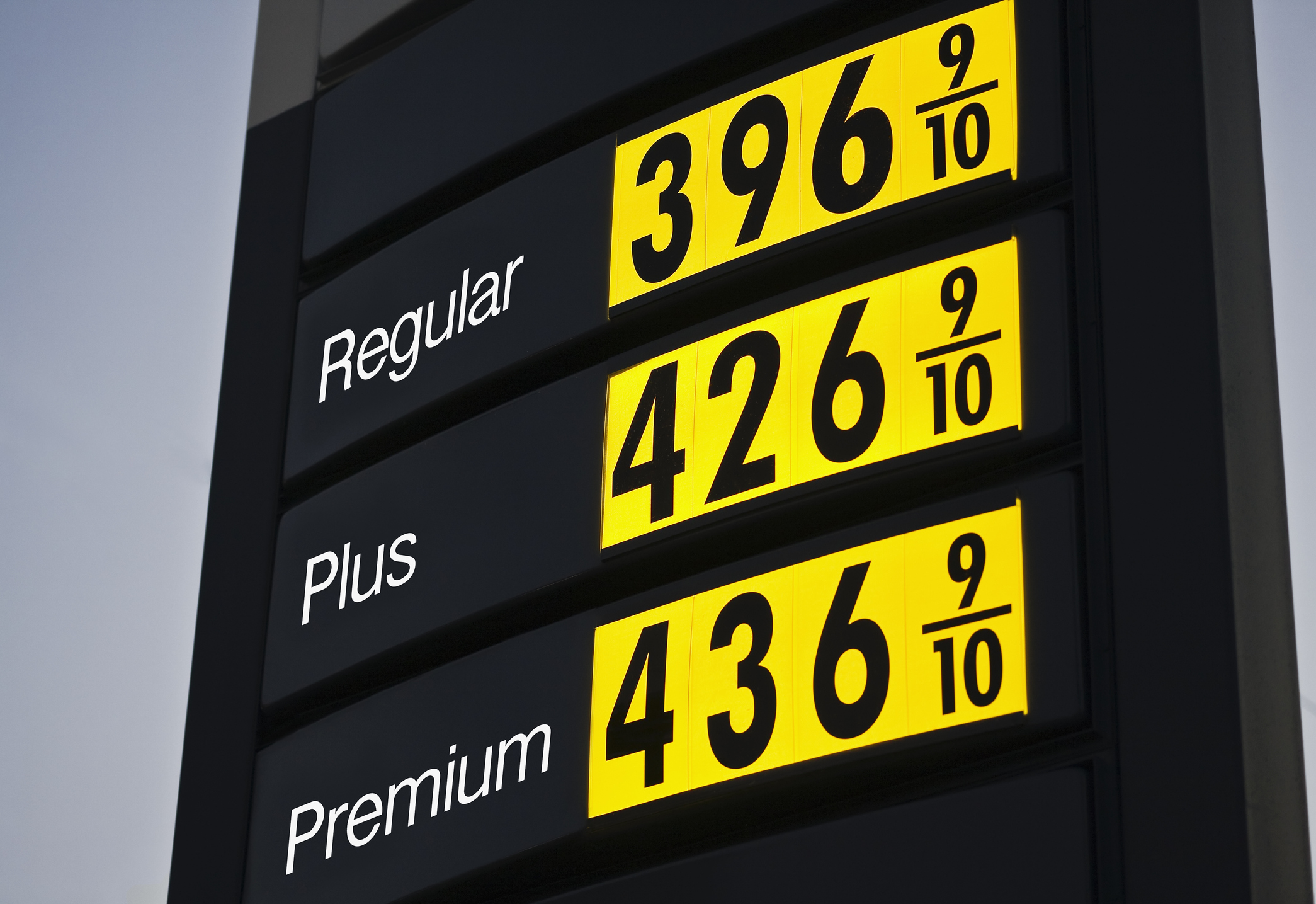Should You Take Out a Long-Term Car Loan?
You'll pay a lot more in interest when you finance a vehicle purchase over six or more years rather than the standard five.

More and more car buyers are making a mistake when it comes to financing vehicle purchases: They’re opting for longer loan terms.
The average length of a car loan is at a record high 66 months, says Ron Montoya, consumer advice editor for car shopping Web site Edmunds.com. It’s been inching up almost every year since 2002, when the average length of a loan was 59.3 months. Higher car prices have been the primary driving force behind the increase in the length of loan terms. The average price of a new car has climbed from $28,710 in 2009 to $31,404 in 2014, Montoya says.
But even as car prices have risen, incomes haven’t kept pace. As a result, many consumers have been making smaller down payments and taking out longer-term loans to make vehicle purchases fit into their budgets. Yet car buyers aren't doing themselves any favors by using this strategy because those who take out longer-term loans end up paying much more overall than buyers who opt for standard five-year loans. Most significantly, the average annual percentage rate (APR) on a 55- to 60-month car loan is 2.41%, Montoya says. It’s more than twice that – 5.99% – for a loan with a term of 67 to 72 months. That higher rate translates into a lot more interest paid over the life of the loan.
From just $107.88 $24.99 for Kiplinger Personal Finance
Become a smarter, better informed investor. Subscribe from just $107.88 $24.99, plus get up to 4 Special Issues

Sign up for Kiplinger’s Free Newsletters
Profit and prosper with the best of expert advice on investing, taxes, retirement, personal finance and more - straight to your e-mail.
Profit and prosper with the best of expert advice - straight to your e-mail.
Let's say, for example, that you decide to buy a 2015 Toyota Camry for the current going rate of $31,425. If you take out a five-year loan at 2.41% and make a down payment of $4,689 (about average for a 60-month loan, Montoya says), then you would pay $1,670 in finance charges over the loan term. However, if you buy the same car with a six-year loan at 5.99% and put down $2,440 (consumers who choose longer loans tend to pay less upfront, Montoya says), you would pay $5,591 in interest. So you’d end up paying more than three times as much in interest on the six-year loan, even though the monthly payments are about the same – $480 versus $473 on the five-year loan.
Longer loan terms can also haunt you when it comes time to sell or trade in your car. The average trade-in age for a car is six years, Montoya says. But if the term on your car loan is longer than six years, you won't be debt-free by then. And the longer you wait, the less you’ll get for your car – which means you’ll have less money to pay down the balance of your loan or purchase a new car. Cars typically lose 55% of their value within five years. That percentage jumps to 68% by year seven, according to Edmunds.com. Rolling the balance of your old loan into the new loan is possible but problematic since you'd be increasing the loan amount and in all likelihood increasing your monthly payments.
How to avoid the long-term loan trap
Get pre-approved for a loan. Auto manufacturers often offer the most competitive rates on loans for new car purchases, Montoya says. But that doesn’t mean you should jump at any offer. Visit your financial institution before you start car shopping to get pre-approved for a loan. This has two benefits, Montoya says. First, you can compare the interest rate you’re quoted by your bank or credit union with offers from dealers to see if you’re really getting a good deal. Second, you’ll be approved for a loan amount based on what you can actually afford. Montoya says that this total loan amount should guide your purchasing decision, rather than the amount of your monthly payment.
Consider leasing. Leasing a car can make more financial sense than a longer-term loan if you don’t plan to keep the car longer than the term of the loan. For example, after a down payment you’d pay about $300 a month to lease the Camry in the example above for three years, Montoya says. Then you can swap it out for a new car without worrying about what to do with the balance of a loan. See When Leasing Makes Sense for more information.
Look into refinancing a longer-term loan. You're not necessarily trapped in a six- or seven-year car loan. Refinancing an auto loan is easier and quicker than refinancing a home mortgage, as long as the car isn't more than a couple of years old and worth less than the loan balance, says Bankrate.com analyst Mike Cetera. First, check to see if your current loan charges a prepayment penalty. Then ask your lender if refinancing is an option, he says. If the answer is no, shop around with other lenders to see if they are willing to refinance the loan. If you can afford the higher payments that will come with a shorter loan, you should be able to refinance at a lower interest rate, Cetera says.
Profit and prosper with the best of Kiplinger's advice on investing, taxes, retirement, personal finance and much more. Delivered daily. Enter your email in the box and click Sign Me Up.

Award-winning journalist, speaker, family finance expert, and author of Mom and Dad, We Need to Talk.
Cameron Huddleston wrote the daily "Kip Tips" column for Kiplinger.com. She joined Kiplinger in 2001 after graduating from American University with an MA in economic journalism.
-
 Forget FIRE: Why ‘FILE’ Is the Smarter Move for Child-Free DINKs
Forget FIRE: Why ‘FILE’ Is the Smarter Move for Child-Free DINKsHow shifting from "Retiring Early" to "Living Early" allows child-free adults to enjoy their wealth while they’re still young enough to use it.
-
 7 Tax Blunders to Avoid in Your First Year of Retirement
7 Tax Blunders to Avoid in Your First Year of RetirementA business-as-usual approach to taxes in the first year of retirement can lead to silly trip-ups that erode your nest egg. Here are seven common goofs to avoid.
-
 How to Plan for Social Security in 2026's Changing Landscape
How to Plan for Social Security in 2026's Changing LandscapeNot understanding how the upcoming changes in 2026 might affect you could put your financial security in retirement at risk. This is what you need to know.
-
 10 Things You Should Know About Buying a Car Today, Even if You've Bought Before
10 Things You Should Know About Buying a Car Today, Even if You've Bought BeforeIf buying a car is on your to-do list, and it's been a while since you went shopping for a new one, this guide will help avoid any nasty shocks in the showroom.
-
 Get the Best Car Deal in Retirement: Here's the Trick
Get the Best Car Deal in Retirement: Here's the TrickPlanning on shopping for a new car this Labor Day weekend? Here’s how to haggle for a better price, even though you're retired.
-
 Five Ways to Save on Vacation Rental Properties
Five Ways to Save on Vacation Rental PropertiesTravel Use these strategies to pay less for an apartment, condo or house when you travel.
-
 How to Avoid Annoying Hotel Fees: Per Person, Parking and More
How to Avoid Annoying Hotel Fees: Per Person, Parking and MoreTravel Here's how to avoid extra charges and make sure you don't get stuck paying for amenities that you don't use.
-
 7 Gas-Saving Tips That Actually Work
7 Gas-Saving Tips That Actually WorkThese are gas-saving tips that will actually work for you and your car this year.
-
 Want to Lease an EV? The Tax Credit 'Loophole' for That Is Going Away Soon
Want to Lease an EV? The Tax Credit 'Loophole' for That Is Going Away SoonTax Credits If you are deciding whether to lease or buy an electric vehicle, here is what you need to know about how the EV lease tax credit works now that it will be eliminated under Trump's new tax law.
-
 Car Buying in a Topsy-Turvy Market
Car Buying in a Topsy-Turvy MarketYou need a new car? Good luck with that! What should you do? We've got some answers.
-
 Watch Out for Flood-Damaged Cars from Hurricane Ian
Watch Out for Flood-Damaged Cars from Hurricane IanBuying & Leasing a Car In the wake of Hurricane Ian, more flood-damaged cars may hit the market. Car prices may rise further because of increased demand as well.